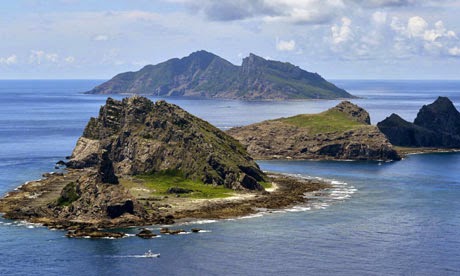Structural Realism
Structural realism emerged in the 1960s and
70s. It shares much of the concepts with the classical realism. Both Realisms
agree with the three ‘S’s.
- Statism: States as the primary actors in international politics
- Survival: The single most important goal of all states.
- Self-Help: The anarchic nature (lack of overarching authority) of international politics and the mistrust between states results in states relying on their own for their survival.
However, structural realists argue that the
behavior of states in international politics can be analyzed not only because
of the pessimistic human nature but also the system itself. They argue that the
system encourages or discourages certain behaviors and actions of states in
international politics.
This blog looks to analyze the Spartly
Islands dispute in the South China Sea by the use of the structural realism
approach.
Spartly Islands Dispute
China currently has over 20 ongoing territorial
disputes ranging from the long historical dispute between the mainland and
Taiwan to the recent symbolic dispute over the Senkaku/Diaoyu Islands
conflict with Japan. However, Beijing’s interests in the Spartly Island dispute
differ from the other territorial disputes as the islands have a significant
economic value.
Economic Values of the Spartly Islands
According to the Chinese reports, 18 metric
tones of Oil is estimated to lie beneath the islands. To understand the 18
metric tones in a more understandable measurement, it is enough to fuel the
Chinese economy for the next 50 years.
The islands offer a large fishing
reserve.Fishing industry in China is a large part of their economic sector as they account for 8% of the world's entire catch.
The islands are also one of the busiest
naval commercial shipping lanes in the world. In 2010, more than half of the
super-tank cargo ships as well as a quarter of the world’s traded crude oil
passed through the islands.
Possible Resolutions
Three Possible Resolutions and Three Structural Realist Objections.
An international debate in the United Nations (UN) to
judge the legitimacy of all parties’ claims can be a possible resolution.
However, a structural realist would argue that the UN is a forum to discuss the
national interests of their own state. Because China has a higher military
and economic capabilities compared with the other South Asian states, a debate in
the UN is likely to reflect the voices of the Chinese claims (More
capabilities) over the other states(Less capabilities). A structural realist would add that the international politics does not operate on a moral code, and that the capacity of states as the determining factor.
The second possible resolution is to share the economic benefits between the states. However, structural realists reject the
notion of collective progression as the states focus on their own short-term gains. In the current neo-liberal capitalist international system,
economic wealth is one of the most important factors in determining a state’s
strength. The South Asian states (regarded as either developing or
less-developed) would not back down from their claims of ownership as the economic benefits
from the islands are crucial for their state survival in the current
neo-liberal capitalist system. China on the other hand, is regarded as one of
the strongest (economic and military capabilities) states in the world.Despite their current strength, they crave for more strength and capabilities.. This behavior can
be analyzed by an offensive realist approach, as they argue that the states should
become as strong as they can to become the hegemon of the region without
worrying about offending other states.
The third possible resolution is an outbreak of war. China has a far greater military
capability compared with the other South Asian States. However, a structural
realist would argue that there is an invisible hand or an invisible code of
conduct in international politics. Though states behave accordingly to their
own national interests, this invisible code of conduct restricts certain
actions and behaviors of states. Despite the greater military capabilities of China, the
Spartly Island dispute is unlikely to result in war due to pressure from the invisible international political code of conduct.
Conclusion
We cannot be sure of the outcome over the Spartly Islands dispute, nor be sure of when the dispute will end. However, we can be sure that no state will back away from their claims of ownership over the trillion dollar islands. An economic value that would ensure the survival of South Asia states in the neo-liberal capitalist system or ensure China as the regional hegemon.









No comments:
Post a Comment